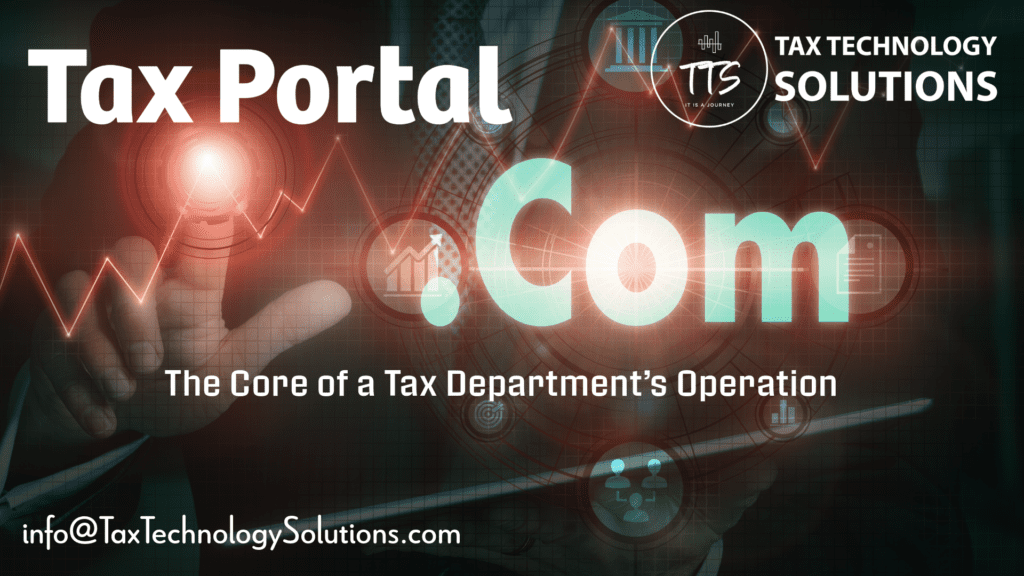
Tax Portal – The Heart of a Tax Department’s Operation
A tax portal is a website that serves as the central hub for all digital activities within a tax department. It typically offers services such as data collection, automated reports, analysis dashboards, online surveys, and various other efficiency tools, ensuring these resources are easily accessible.
To cater to a broader audience, a tax portal is generally designed with a hierarchical structure. This consists of a main site at the highest level, followed by a tree structure design with multiple branches or subsites, each dedicated to a specific tax function or sub-department. For instance, the main section of a tax portal may include links to the tax department’s policies, documentation applicable to all associates, frequently accessed resources, and the tax department directory.
Below the main tax portal site, there may be subsites tailored to individual sub-departments. Examples include subsites for the federal income tax team, state income tax function, transaction tax team, property tax division, and tax accounting section. Each subsite of a tax portal may offer unique resources or features, such as downloading the latest function-specific tax software or utilizing function-specific data collection and reporting mechanisms.
Data collection in each subsite may be conducted through various methods tailored to their function. Online data entry forms can be employed to gather and validate data, ensuring consistency. Additionally, PDFs or MS Excel reports can be uploaded to central document repositories like MS SharePoint or other CMSs (Content Management Systems) to prevent tax-related data from being collected via email attachments.
More advanced implementations of a tax portal may provide direct database import collection features, allowing MS Excel templates or structured CSV files to be imported into a tax data warehouse for immediate validation and processing. In scenarios where security concerns have been addressed, tax data may also be collected through direct database-to-database connections, enabling a tax data warehouse read-only access to extract and ingest necessary data directly from the GL or other internal or external financial databases.
Reporting capabilities within a tax portal can include automated online reports dynamically generated by the backend processes or ODBC (Open Database Connectivity) connections to pull data directly into MS Excel, Alteryx, or any other tool supporting ODBC/DBMS standards.
The final component that integrates all aspects of an efficient tax portal is a tax data warehouse. A tax data warehouse is a centralized repository that consolidates a company’s tax-related data, streamlining key functions such as tax provision, compliance, and audit. It aggregates content from various sources, including internal and external accounting systems, corporate ERP, and diverse financial databases. The primary purpose of a tax data warehouse is to serve as a single source of truth for tax information, facilitating efficient data transformation, analysis, and reporting.
The consolidation offered by a tax data warehouse not only simplifies data management but also enhances the accuracy and compliance of tax records. By maintaining a single repository, tax professionals can perform sophisticated data analysis, uncovering insights that drive better decision-making. Furthermore, a tax data warehouse preserves historical data, which is invaluable for trend analysis and understanding long-term business performance.
Despite the clear benefits, the adoption of tax portals has been slow due to the costs associated with implementation, ongoing maintenance, and support. Our expert team at Tax Technology Solutions LLC brings decades of experience in addressing challenges related to the implementation and operation of tax portals. To assist those interested in exploring the advantages of a tax portal, Tax Technology Solutions offers a fully managed free trial tax portal, customized to meet clients’ unique needs. Our expertise has led to significant cost savings and the elimination of repetitive, mundane tasks.
Now is the time to take advantage of our complimentary offer to enhance your tax team’s work-life balance. For more information on our free tax portal offer or any of our automation services, please contact us today at [email protected].